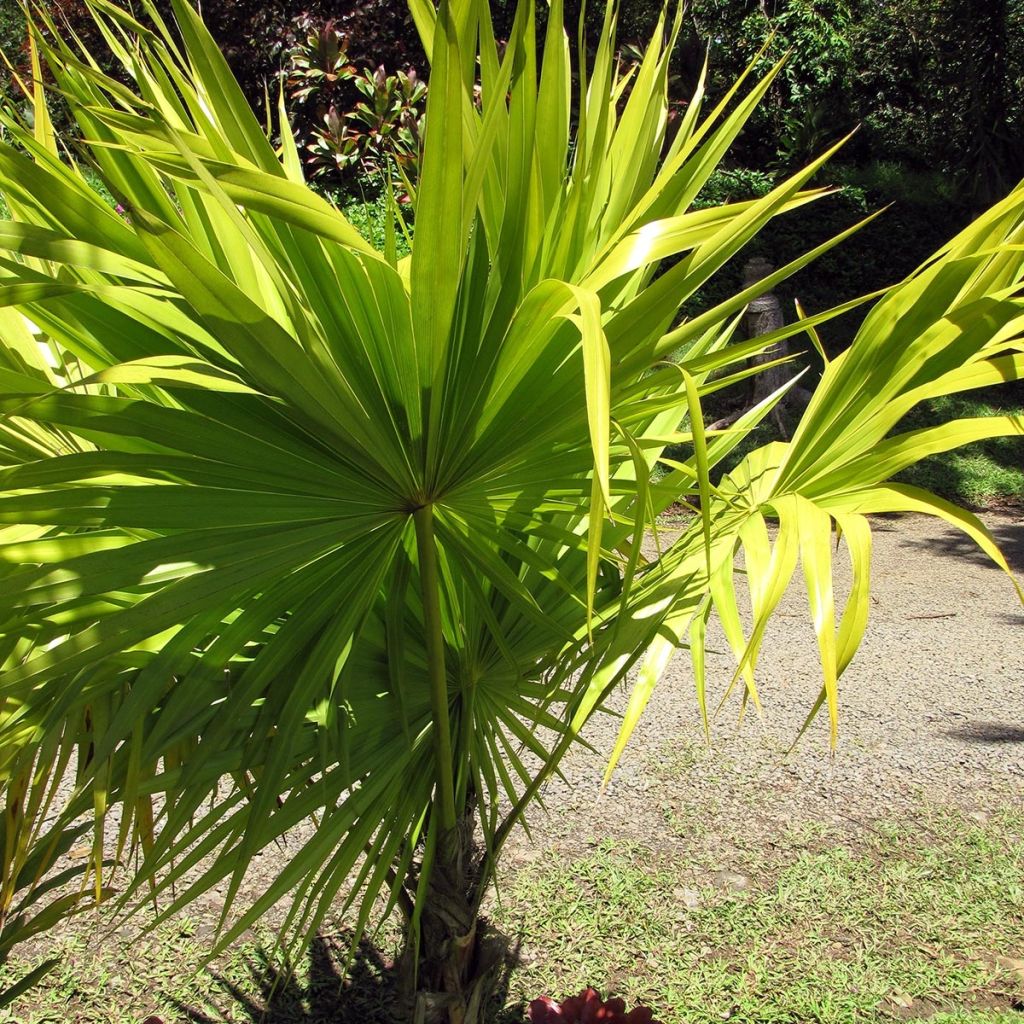

Thrinax radiata - Palmier balai de Floride
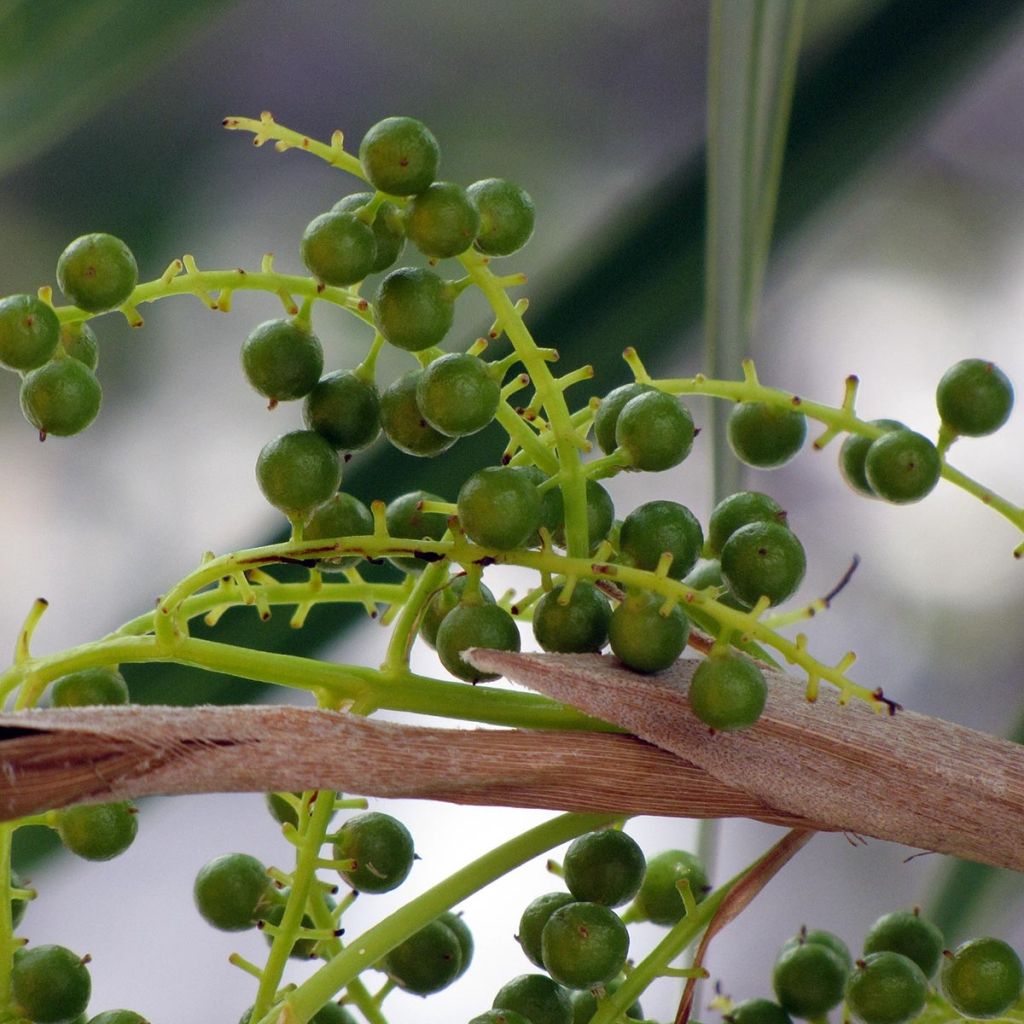

Thrinax radiata - Palmier balai de Floride
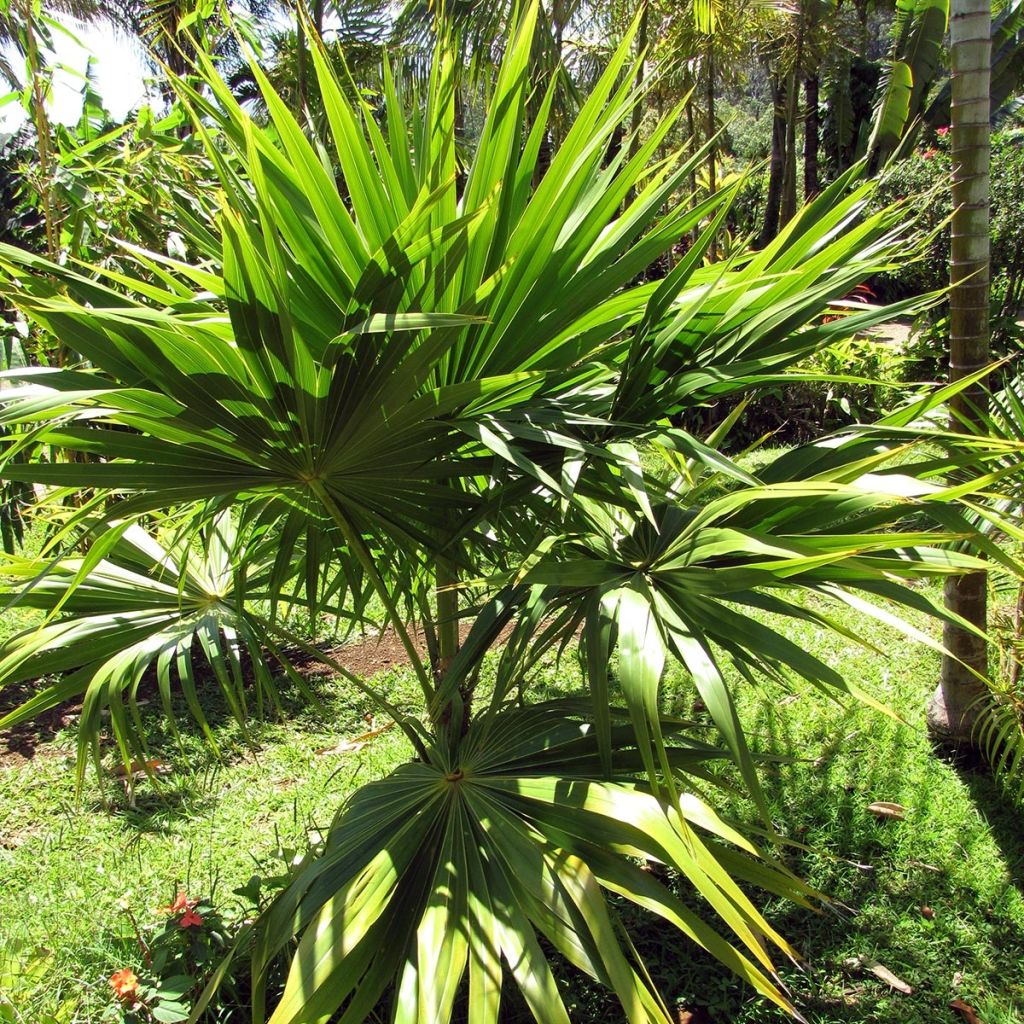

Thrinax radiata - Palmier balai de Floride
Thrinax radiata - Florida Thatch Palm
Thrinax radiata
Florida Thatch Palm, Thatch Palm, Silk-top Thatch Palm, Sea Thatch Palm
This plant carries a 24 months recovery warranty
More information
We guarantee the quality of our plants for a full growing cycle, and will replace at our expense any plant that fails to recover under normal climatic and planting conditions.
From €5.90 for pickup delivery and €6.90 for home delivery
Express home delivery from €8.90.
Does this plant fit my garden?
Set up your Plantfit profile →
Description
The Thrinax radiata is a slow-growing palm tree with a modest stature but particularly attractive, well suited for container cultivation. It is a tender species characterized by a slender false trunk topped with a bouquet of magnificent palmate leaves divided into wide and radiating segments, dark green on the front and lighter on the back. The plant adapts to any well-drained soil, even limestone, and tolerates sunlight from a young age. It can be potted up behind a bay window, allowing it to be cultivated indoors from October to mid-May.
The Thrinax radiata belongs to the family of Arecaceae. It is a palm tree native to Cuba, Belize, Honduras, Mexico, and Florida. In the wild, it grows in limestone sands, not far from the sea. This palm tree, which can reach about 10 m (33ft) in height in nature, will remain much more compact in a pot. Its growth is slow. Over time, it develops a slender, straight, tall false trunk (stipe), sometimes reaching 12 cm (5in) in diameter, smooth and grayish in color. The lower part of the stipe, the oldest, is covered with remnants of old petioles and dried leaves. It often has a cluster of exposed roots at the base of the stipe. The foliage is arranged in a semi-open crown and can eventually reach a span of 4 m (13ft). This crown is composed of almost circular palmate leaves, 80 cm (32in) to 1 m (3ft) wide, divided into 60 fairly wide, lanceolate segments, with slightly trailing tips.
Thrinax palms are hermaphroditic and monoecious, meaning that the same individual bears male and female flowers. Flowering occurs on mature individuals. It takes the form of upright to arched inflorescences, slightly protruding from the leaves, adorned with small ivory and fragrant flowers. The spherical fruits become white and smooth or slightly punctate when ripe, measuring 7 to 8 mm (1in) in diameter.
The Thrinax radiata can be cultivated in a large container anywhere in Europe, where it can be stored in a conservatory during winter or even in a large, bright, and minimally heated room. Planted near an entrance or on either side of a gate, isolated near a swimming pool, or on a terrace, it will be superb. Enthusiasts of graphic plants can place other exotic plants such as Nolina siberica, Agave ovatifolia, Dasylirion wheeleri, Yucca rigida, or Beshorneria yuccoïdes alongside it.
Report an error about the product description
Thrinax radiata - Florida Thatch Palm in pictures
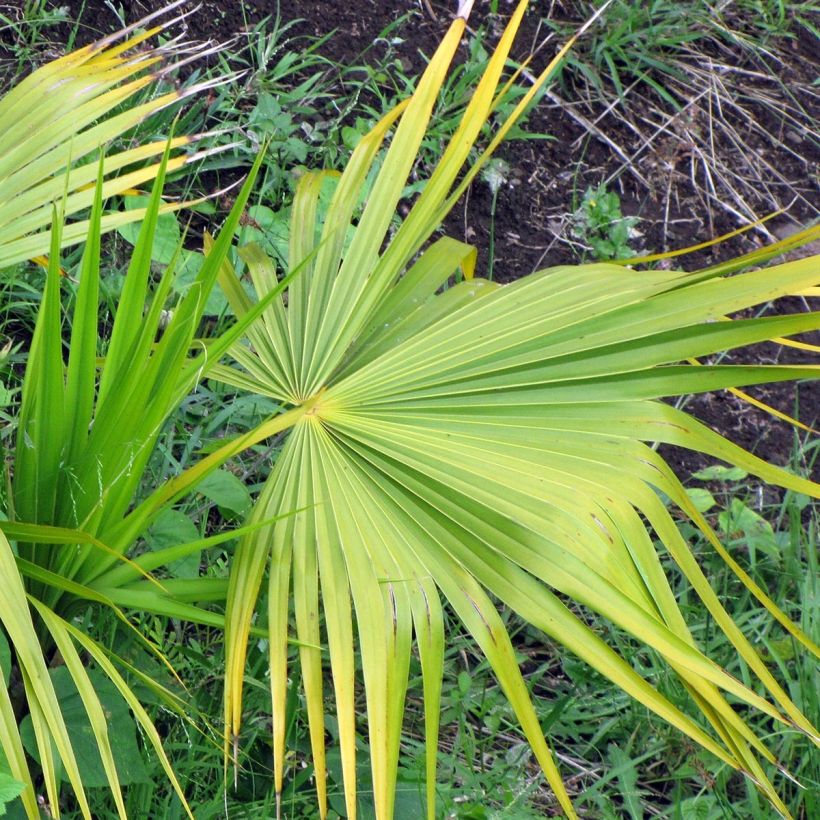

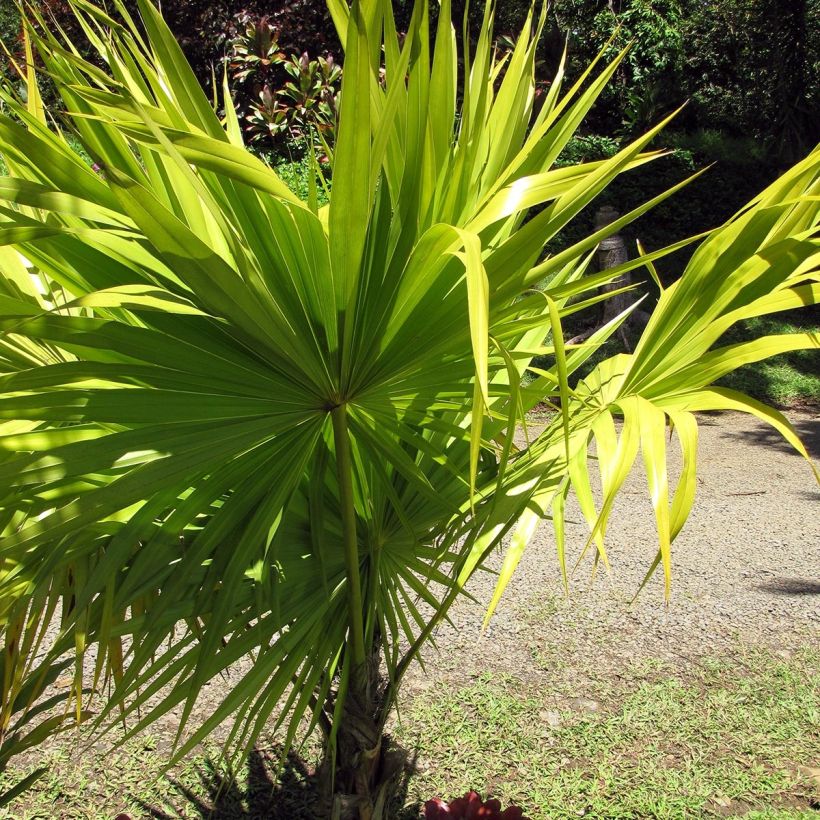

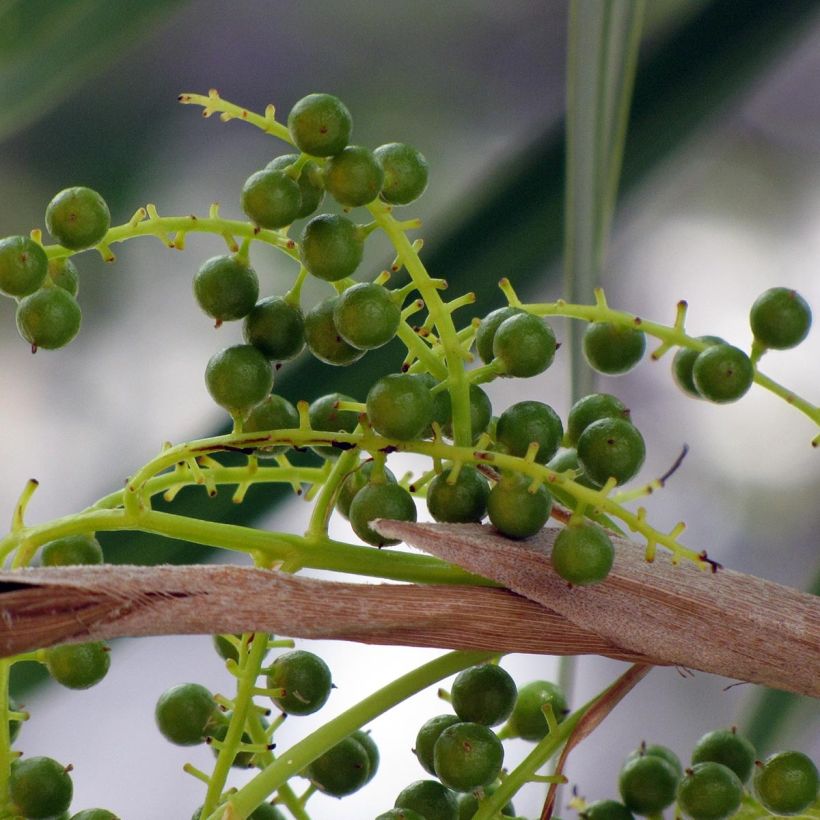

Plant habit
Flowering
Foliage
Botanical data
Thrinax
radiata
Arecaceae
Florida Thatch Palm, Thatch Palm, Silk-top Thatch Palm, Sea Thatch Palm
Central America
Planting and care
This palm tree is best grown in a container. Choose a large volume container (40 liters) with holes in the bottom. Place a layer of clay balls, gravel, or pottery shards at the bottom to improve drainage. Use a mixture of garden soil (even limestone), compost, and sand. Add a little blood and bone-based fertilizer and water generously. Fertilize every spring. In summer, watering should be regular. The Thrinax parviflora tolerates the sun well, even when young, and can be placed behind a glass window. It is a frost-sensitive plant.
Overwinter your palm tree in a conservatory, greenhouse, or even a large well-lit room maintained at around 10 to 15°C (50 to 59°F). Reduce watering in winter.
Planting period
Intended location
Care
This item has not been reviewed yet - be the first to leave a review about it.
Haven't found what you were looking for?
Hardiness is the lowest winter temperature a plant can endure without suffering serious damage or even dying. However, hardiness is affected by location (a sheltered area, such as a patio), protection (winter cover) and soil type (hardiness is improved by well-drained soil).

Photo Sharing Terms & Conditions
In order to encourage gardeners to interact and share their experiences, Promesse de fleurs offers various media enabling content to be uploaded onto its Site - in particular via the ‘Photo sharing’ module.
The User agrees to refrain from:
- Posting any content that is illegal, prejudicial, insulting, racist, inciteful to hatred, revisionist, contrary to public decency, that infringes on privacy or on the privacy rights of third parties, in particular the publicity rights of persons and goods, intellectual property rights, or the right to privacy.
- Submitting content on behalf of a third party;
- Impersonate the identity of a third party and/or publish any personal information about a third party;
In general, the User undertakes to refrain from any unethical behaviour.
All Content (in particular text, comments, files, images, photos, videos, creative works, etc.), which may be subject to property or intellectual property rights, image or other private rights, shall remain the property of the User, subject to the limited rights granted by the terms of the licence granted by Promesse de fleurs as stated below. Users are at liberty to publish or not to publish such Content on the Site, notably via the ‘Photo Sharing’ facility, and accept that this Content shall be made public and freely accessible, notably on the Internet.
Users further acknowledge, undertake to have ,and guarantee that they hold all necessary rights and permissions to publish such material on the Site, in particular with regard to the legislation in force pertaining to any privacy, property, intellectual property, image, or contractual rights, or rights of any other nature. By publishing such Content on the Site, Users acknowledge accepting full liability as publishers of the Content within the meaning of the law, and grant Promesse de fleurs, free of charge, an inclusive, worldwide licence for the said Content for the entire duration of its publication, including all reproduction, representation, up/downloading, displaying, performing, transmission, and storage rights.
Users also grant permission for their name to be linked to the Content and accept that this link may not always be made available.
By engaging in posting material, Users consent to their Content becoming automatically accessible on the Internet, in particular on other sites and/or blogs and/or web pages of the Promesse de fleurs site, including in particular social pages and the Promesse de fleurs catalogue.
Users may secure the removal of entrusted content free of charge by issuing a simple request via our contact form.
The flowering period indicated on our website applies to countries and regions located in USDA zone 8 (France, the United Kingdom, Ireland, the Netherlands, etc.)
It will vary according to where you live:
- In zones 9 to 10 (Italy, Spain, Greece, etc.), flowering will occur about 2 to 4 weeks earlier.
- In zones 6 to 7 (Germany, Poland, Slovenia, and lower mountainous regions), flowering will be delayed by 2 to 3 weeks.
- In zone 5 (Central Europe, Scandinavia), blooming will be delayed by 3 to 5 weeks.
In temperate climates, pruning of spring-flowering shrubs (forsythia, spireas, etc.) should be done just after flowering.
Pruning of summer-flowering shrubs (Indian Lilac, Perovskia, etc.) can be done in winter or spring.
In cold regions as well as with frost-sensitive plants, avoid pruning too early when severe frosts may still occur.
The planting period indicated on our website applies to countries and regions located in USDA zone 8 (France, United Kingdom, Ireland, Netherlands).
It will vary according to where you live:
- In Mediterranean zones (Marseille, Madrid, Milan, etc.), autumn and winter are the best planting periods.
- In continental zones (Strasbourg, Munich, Vienna, etc.), delay planting by 2 to 3 weeks in spring and bring it forward by 2 to 4 weeks in autumn.
- In mountainous regions (the Alps, Pyrenees, Carpathians, etc.), it is best to plant in late spring (May-June) or late summer (August-September).
The harvesting period indicated on our website applies to countries and regions in USDA zone 8 (France, England, Ireland, the Netherlands).
In colder areas (Scandinavia, Poland, Austria...) fruit and vegetable harvests are likely to be delayed by 3-4 weeks.
In warmer areas (Italy, Spain, Greece, etc.), harvesting will probably take place earlier, depending on weather conditions.
The sowing periods indicated on our website apply to countries and regions within USDA Zone 8 (France, UK, Ireland, Netherlands).
In colder areas (Scandinavia, Poland, Austria...), delay any outdoor sowing by 3-4 weeks, or sow under glass.
In warmer climes (Italy, Spain, Greece, etc.), bring outdoor sowing forward by a few weeks.


































